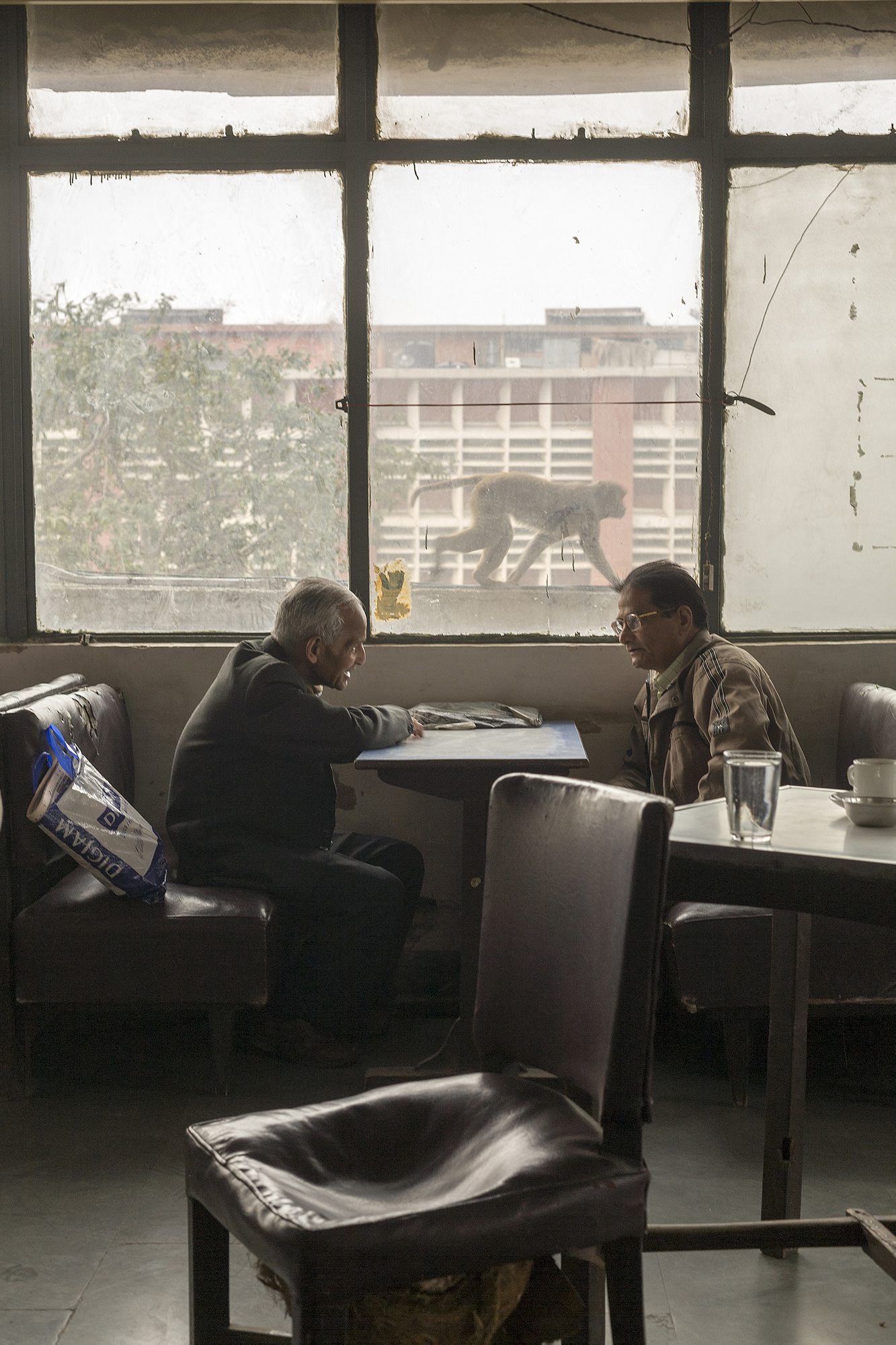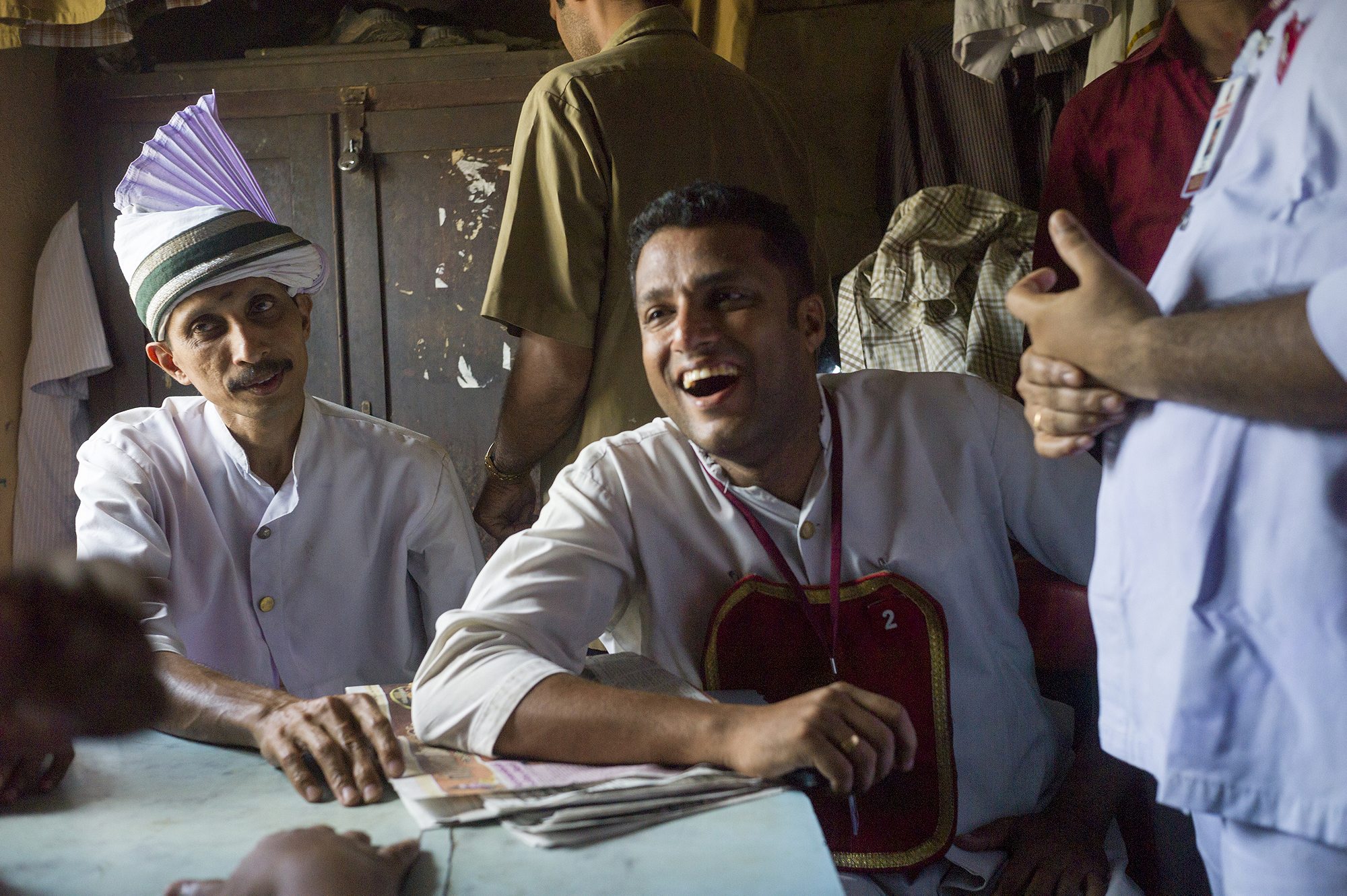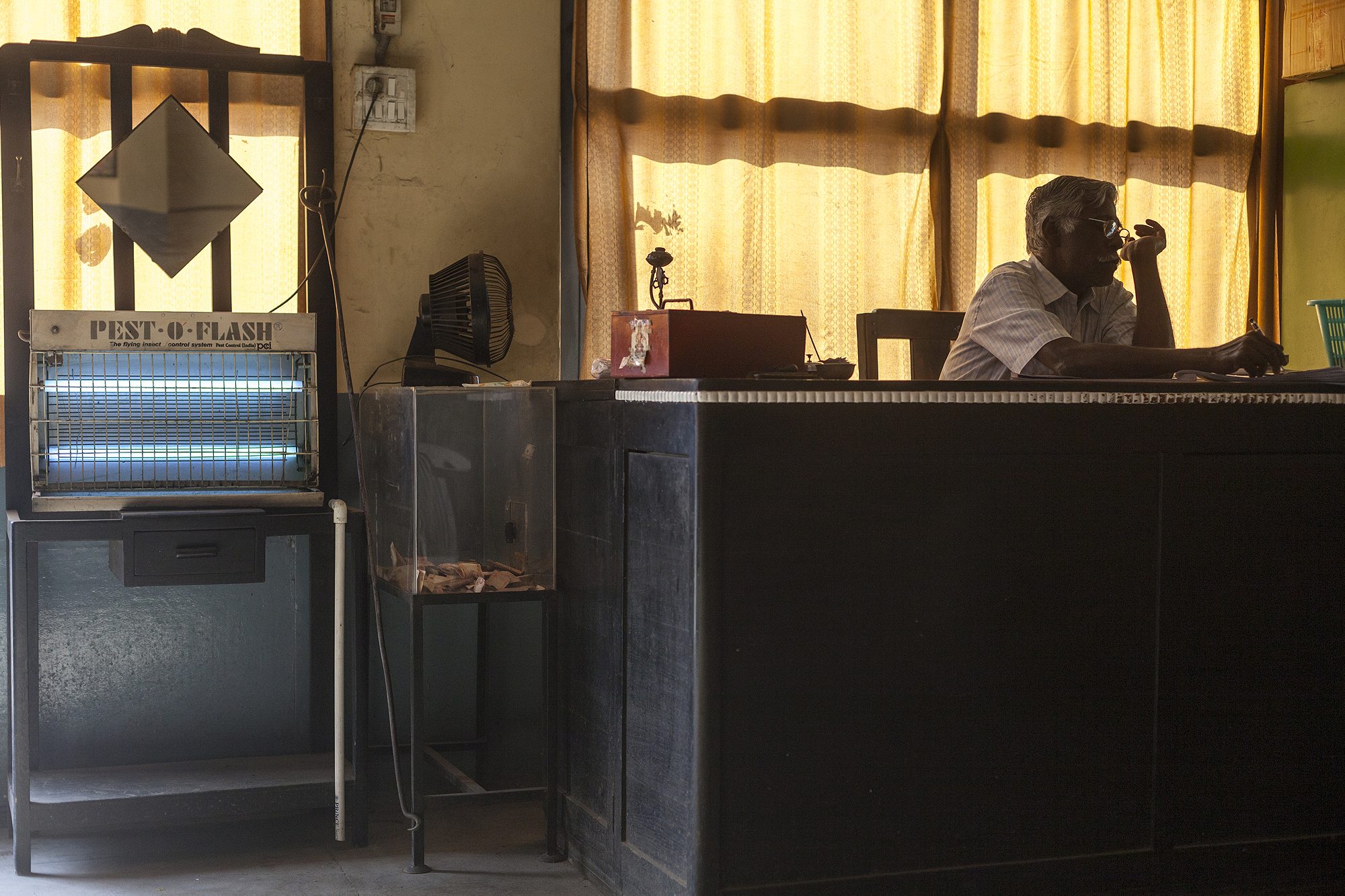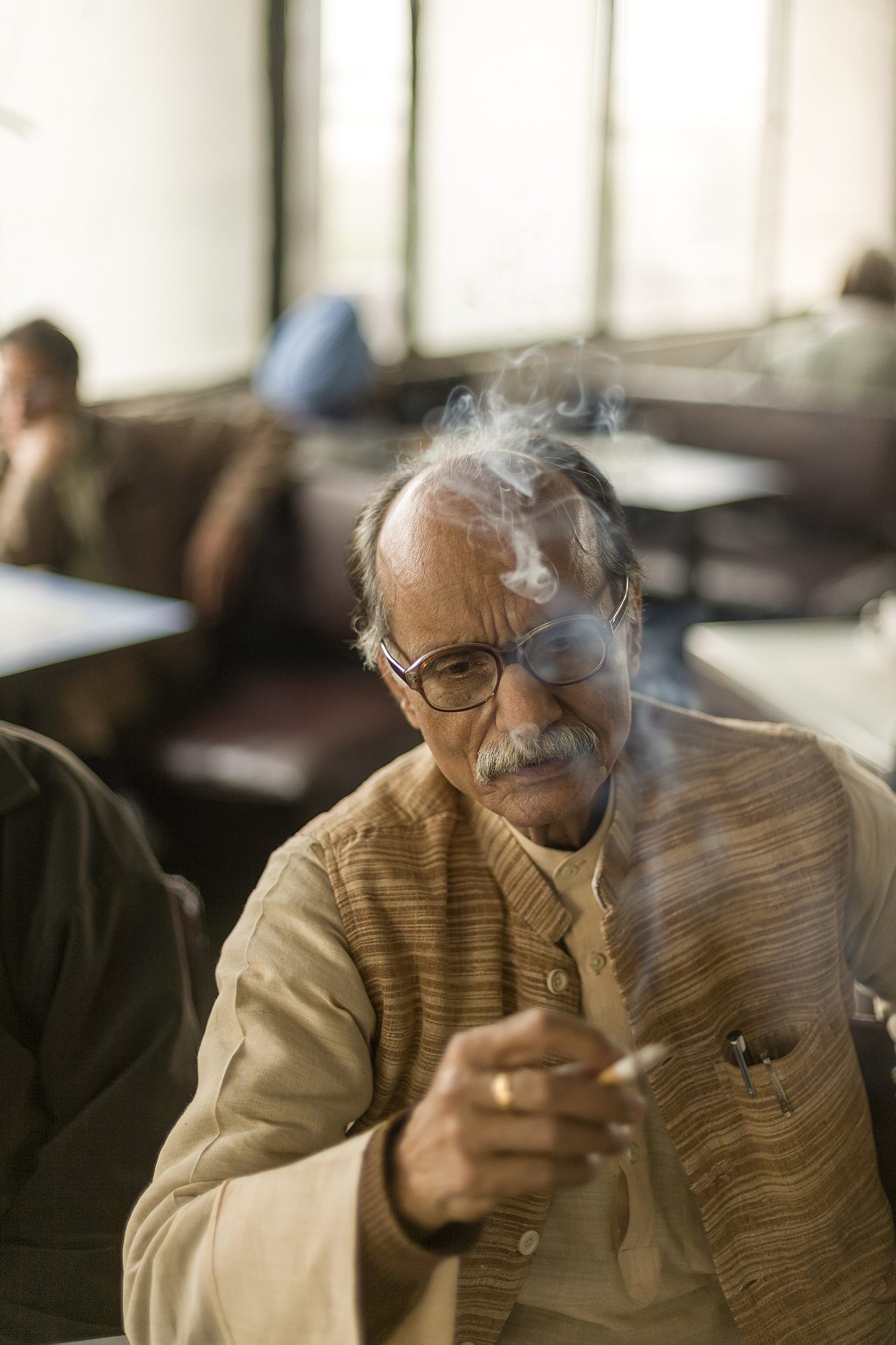Stuart Freedman photographs India’s coffee houses, where lawyers, journalists, city officials and artists once congregated to debate the state of the country.
When the Indian Coffee House of New Delhi threatened to close back in 2009, something quite extraordinary happened. Reporters and politicians descended on the modest establishment, founded in 1957, in a bid to save it. Perched on the third floor of the rundown Mohan Singh Place shopping center overlooking Delhi’s central Connaught Place, the unassuming coffee house had largely become a haunt for retired old men. But campaigners remembered a more glorious time, when lawyers, journalists, city officials and artists congregated there to argue the country’s ills and devise solutions to fix them. “Suddenly, the city remembered itself,” explains photographer and writer Stuart Freedman, who had first visited the place 15 years prior. With the campaign’s success, Freedman realized the historical importance of coffee houses in India, places that he had himself adopted as echoes of the working class cafés of his East London childhood. Six years later, the British photographer is raising funds to publish his first book, “The Palaces of Memory.” He joined R&K from London.
Roads & Kingdoms: How did you first come across the Indian Coffee House in New Delhi?
Stuart Freedman: The first time I went to Delhi would have been 1994. I had already worked quite a lot internationally, in Pakistan and Afghanistan, before that. When I got to Delhi, I just thought: “Oh my god, this place is mad.” And the Indian Coffee House, which is this odd café atop a brutalist shopping center, just seemed to me a bit of a refuge away from the strangeness of the streets of Delhi. I’ve been going to it on and off for about 20 years, which is just an extraordinary thing.

R&K: What did you like about it?
Freedman: I suppose it was somewhere quiet and it just felt a bit like home. I was not living permanently in Delhi at the time, and it felt like somewhere I could always go back to, somewhere that was mine. I think it took me a long time to realize that what I was experiencing was this echo of the working class cafés of my youth in east London. The greasy spoons that echoed post-war London and its austerity. They were the places where Rock ‘n Roll culture came about in the 50s and the 60s, places that transmitted this idea of rebellion and youth. I didn’t know this at the time because I was just a kid, but they held within them something about London and culture and politics and poetry. And I felt that echo in the Indian Coffee House.

R&K: What does the Indian Coffee House of Delhi look like?
Freedman: As you walk into the shopping center, you walk up the stairs and pass jean shops and clothing stores, and you turn into a room that’s full of rickety tables and old men chatting to each other. You take a seat and the light’s flooding in from the terrace and there are waiters scampering around with glasses of water and coffee cups. The place is a little bit rundown but I don’t see that. There’s a room for ladies and families, which had booths and now new tables. There’s another room where all the old guys sit and there’s a terrace, which is magical because you’re above the city. You’re high enough to see the kites and the birds in the skies circling overhead in the polluted Delhi air. You’re above the traffic and the noise. Space is such a premium in the city that it feels… If not calm, then calmer. There’s something magical about it, I guess I’m really in love with the place.

R&K: How much has it changed over the past 20 years?
Freedman: It hasn’t changed at all. It’s exactly the same. I think that a good thing that has happened though is that lots of young people have actually discovered the Indian Coffee House. Back in the day they tended not to go there unless they were there with their folks but since the closure threat, you get lots of students going there because it’s cheap. It has had an injection of life.
WITHIN THESE PLACES IS THE MODERN HISTORY OF INDIA
R&K: At what point did you realize you wanted to turn this story into a book?
Freedman: Whenever I worked on assignment in India, I’d always seek coffee houses out because there was this resonance with my upbringing. They actually taught me an important lesson, that people are the same the world over. I know this sounds a little cliché but it’s a truism. So I sought the cafes out whenever I traveled. I guess I decided this was a story that I wanted to photograph about five years ago, when a German magazine assigned me to write the original piece. Before that, I hadn’t realized how intertwined with post-Independence history these places were. Politically they were very significant. Satyajit Ray, the film director, sat in the one I shot in Calcutta. Manna Dey, this Bengali singer wrote a song about a coffee house in the 1970s. Politicians plotted independence in these coffee houses before the war. Within these places is the modern history of India. It’s very precious.

R&K: You’ve visited so many these establishments throughout the entire country. In your opinion, what makes a good coffee house?
Freedman: The company. It doesn’t matter how modern or how decrepit the coffee house is, it’s the conversations that make these places. I think increasingly in the West, places like these are disappearing. In India too, we have more and more of these corporatized cafés in cities. Somehow coffee houses have remained places where people can discuss openly. And the coffee is cheap, which means that there’s a lot of people who couldn’t afford to go to Starbucks or any of its Indian copies. So it’s really about having that space to meet different people.

R&K: It’s refreshing to see photos of India taken inside the private sphere, it’s different from a lot of things we see photographers doing when they go to India.
Freedman: I’ve worked in South Asia a lot and I don’t want to keep imaging India in the same way, which is either poverty or exotica. I’m very bored of that as a journalist. It’s not true. People live their lives and fall in love just like we do all over the world. We don’t have to exoticize people and we don’t have to pity them. I just wanted to document spaces where ordinary Indians are. And I think within the Indian psyche, coffee houses have quite a special place. Coffee houses are not homes, but they aren’t restaurants, they’re somewhere in between. And there’s something very interesting culturally about that space, both in the West and the East.

R&K: Who are some of the people you met that embodied the ideas you wanted to photograph?
Freedman: I interviewed quite a few people. Among them was the former Election Chief Commissioner of India. I went to his apartment on the outskirts of Delhi, and he spoke of the political importance of these places, the time when politicians would be bustling in and out of meetings there or they would come to chat about the latest intrigue just as they left the Parliament. I also spoke to a theater director called MK Raina and he said that the Delhi coffee house was a hub in the 70s. It was where really interesting ideas were discussed. That generation really thought that things were changing, and the coffee houses were the prism through which they saw that change.

R&K: Do people still see the significance of coffee houses in India today?
Freedman: You know, I’m not Indian, so it’s not really a question that I can answer. But I think sometimes people forget what’s under their noses. And now a whole new generation has actually discovered India’s coffee houses. I don’t think they were ever forgotten, but I think people were more focused on development and the market and that everybody got off on this idea of new wealth. Now, people are realizing that these places were worth remembering.
R&K: The book will include an introduction by the writer Amit Chaudhuri, why did you reach out to him?
Freedman: He wrote a book about Calcutta that I loved, but he hadn’t mentioned coffee houses in it. I knew that he had lived in London in the 1980s, in fact in his newest book “Odysseus Abroad,” which is a Joycean narrative about traveling to London, he describes staying in these grotty places that he hated. And it was a significant time in the country’s history. In the 80s, London exploded with this new cultural vitality and lots of the old cafes would have gone. So I sensed that he had a good grip on the coffee house culture of both India and London.

R&K: It’s interesting to hear you talk so much about London when discussing a project based in India.
Freedman: The book is about India and its coffee houses, but I guess in a horribly shameless way, it’s a bit about me as well. It’s a very personal project. As a young journalist, when I got to India, I expected to find difference but I actually found similarity. We exoticize the developing world and actually I think it’s better to try and find common ground. There’s something important about not seeing other people as fundamentally different. That’s not a way to understand things.
You can buy Stuart Freedman’s book “Palaces of Memory” here.